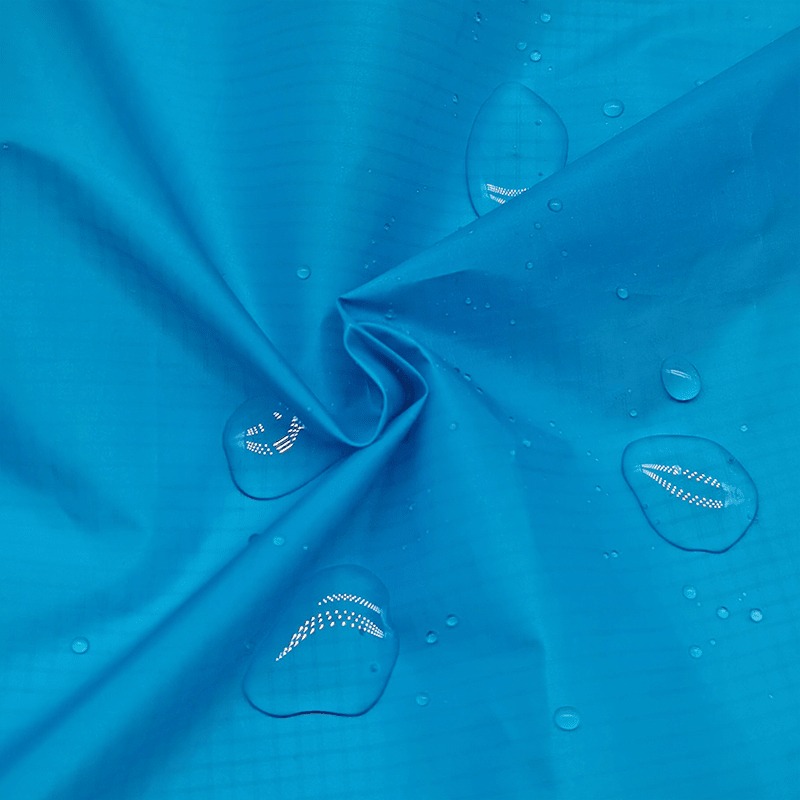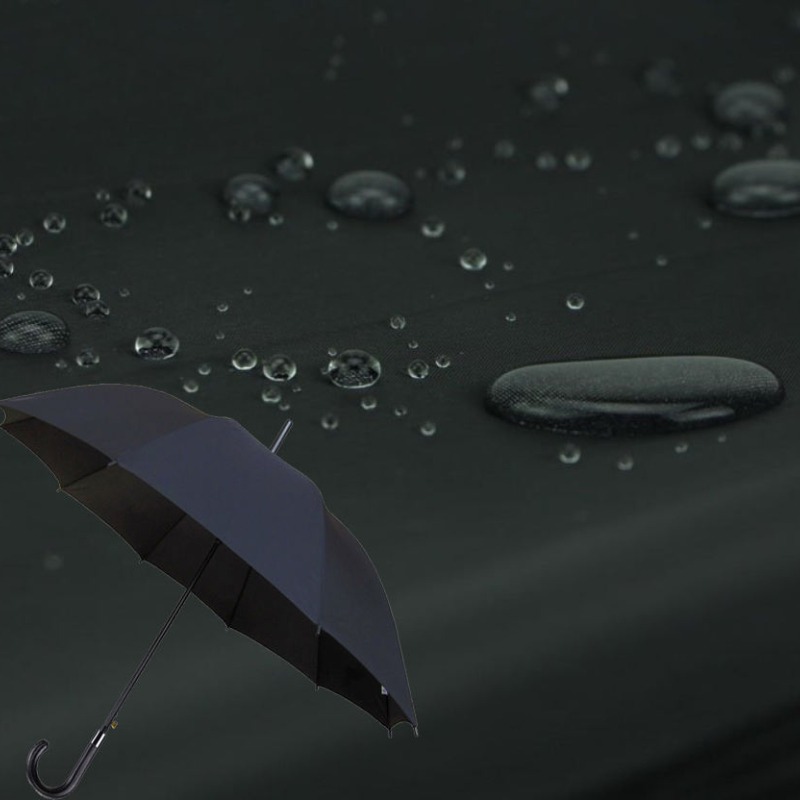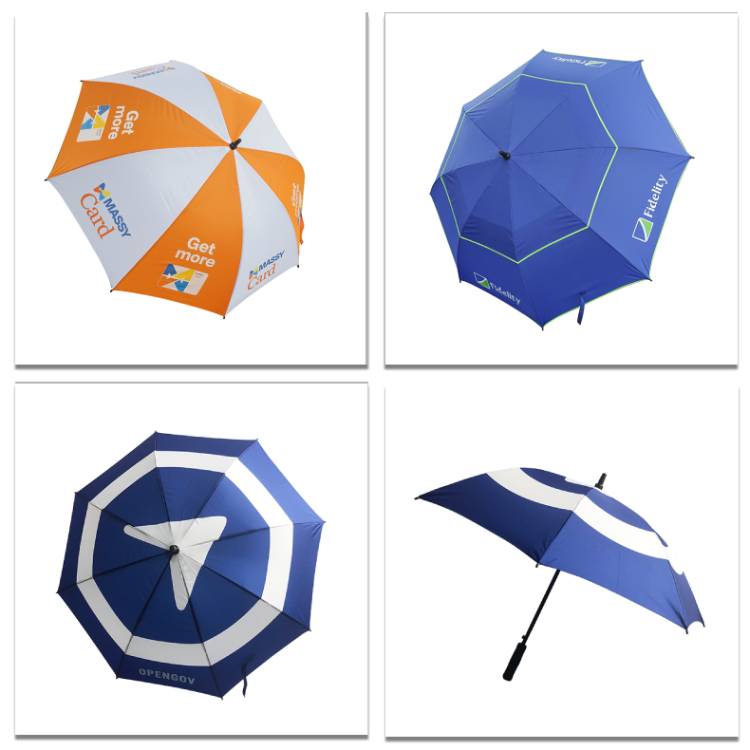What is the main canopy material of umbrella?
The main canopy materials of an umbrella are Nylon, polyester, and Ponge fabric.
What are the characteristics/properties of Nylon and polyester fabrics? We use Nylon and polyester for the umbrella’s canopy, because they are cheaper, and can meet the physical requirements of the umbrella industry.
Nylon and polyester are both lightweight and durable synthetic fabrics that share many of the same properties, such as easy care, wrinkle resistance, stretch resistance and shrink resistance. Nylon is softer than polyester but also stronger, while polyester is faster drying, easier to dye, and abrasion resistant. Neither is a better fabric, though each has uniquely superior attributes that lend themselves to certain uses.


History
Nylon, the world’s first synthetic fiber, was invented by Wallace Carothers in 1935. Wallace was working in Dupont company then. It was not available to the public until after World War II but was used extensively by the military for parachutes and tents. Polyester did not make its debut until the early 1940s and only became popular in the 1950s.
Feel
During the early years, nylon was always considered a smoother and softer fabric than polyester. Nylon was created as a substitute for silk and it shows in its soft, lustrous feel. From its inception, polyester has always been a rougher fabric than nylon, hence its original use in outerwear garments and suits. The refined manufacturing capabilities of today have resulted in softer polyester that in many ways matches nylon and certainly the softness of cotton.
Durability
Both nylon and polyester are strong and lightweight due to their polymer-based construction. Nylon is the stronger of the two fabrics with greater stretchability. Though not as strong, polyester resists pilling better than nylon, which is when fibers unravel and ball up at the end. While this does not weaken the garment physically, it is not attractive aesthetically.
Water-Wicking Ability
When it comes to fast-drying fabrics, polyester has the edge. Both are naturally hydrophobic, which means they expel water, ideally to the surface of the garment where it will evaporate. Nylon actually absorbs some water, which means it takes longer for a wet garment to dry.
Lasting Color
Polyester absorbs more color faster than nylon due to the same properties that made it better at wicking water. Dyed polyester expels the water in the dye but not the dye itself, which bonds with the fibers. Nylon absorbs water, resulting in less dye bonding to the fibers.
Easy Care
Bold polyester and nylon are easy-care fabrics that can be machine washed and dried, though low heat is recommended. Polyester, while not as soft as nylon, sometimes needs the addition of a fabric softener, while nylon whites should be washed separately and with bleach to avoid yellowing. As for ironing, both should be ironed on low heat because they can melt at high temperatures.
Polyester umbrellas have a high market share. Polyester itself has good toughness and strength and can be used to produce umbrellas after waterproof treatment. Of course, sunscreen coating can be added as required. Most umbrellas are used for rain and sun protection.
Ponge fabric is also a commonly used material for making umbrellas. The touching of this cloth is similar to that of cotton cloth. The cloth has a good light-blocking property. 99% of the ultraviolet rays can be shielded. It is the preferred material for umbrella production. However, pg cloth has a high production cost, making umbrellas more expensive.
Ponge fabric is a kind of man-made fiber. Its texture is relatively soft. Its cloth surface is matt, and it is not easy to reflect light. This kind of cloth is like the fabric of clothes. It has a good feel, just like the cloth woven from a natural cotton cloth, and its thermal expansion and cold contraction are very good. It is often used by us and many people. It is usually used for a straight umbrella or folding umbrella.


